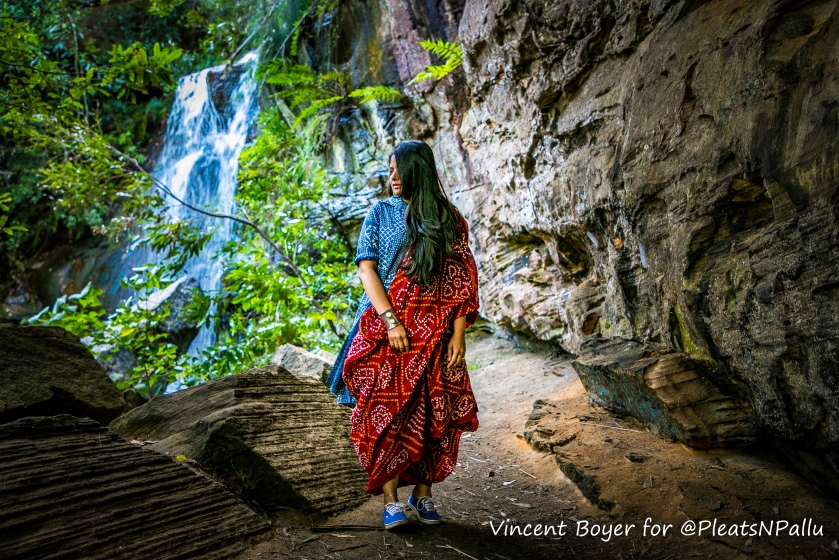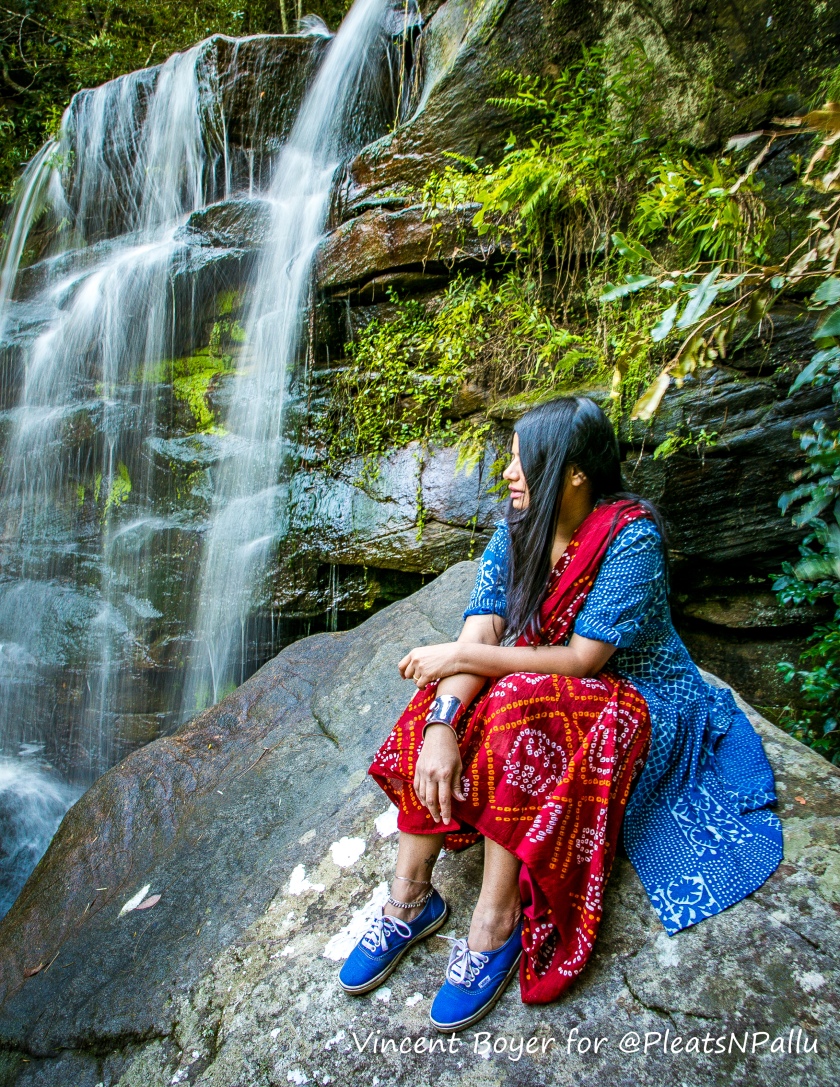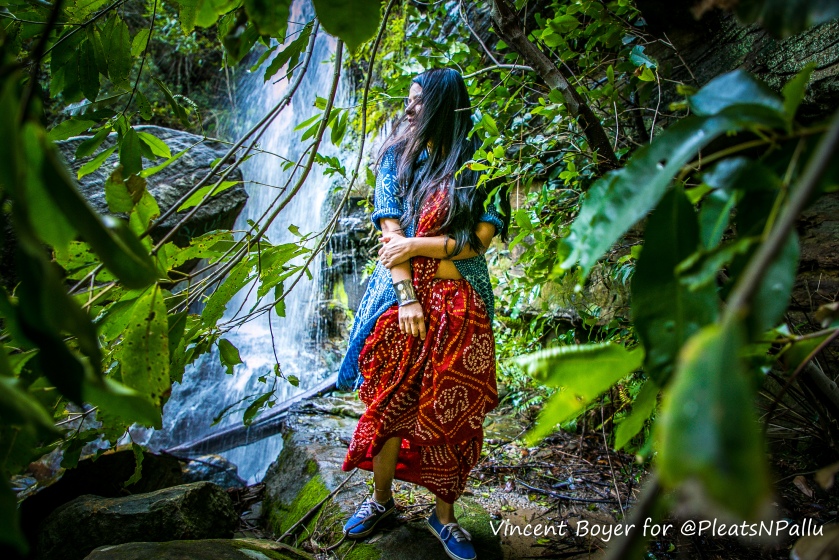Bandhani, the traditional Indian art of tying the fabric and then resist dyeing, is one of the earliest forms of surface ornamentation on fabric …



Photos: Vincent Boyer (Say hi on instagram @vincetravelbook)
I have a insatiable obsession with Jamnagari bandhanis and wear them for everything from treks to gala dinners and everywhere in between. The bandhej textiles from here are easily recognisable by the dexterous artistry on fabric and use of multiple vibrant colours sometimes incorporating up to nine different hues locally called the naurang chundhari.
The saree in the photos here features a traditional design called the bavanbagh (which is Gujarati for 52 gardens), in a brilliant red background, apparently the properties of the water in Jamnagar helps in giving sarees a particularly vibrant red hue.
Bavanbaghs typically feature a network of squares created by rows upon rows of bandhej spots with single motifs in each compartment. More red bandhani sarees on gajji silk from the erstwhile princely state here and here. plus a bright fushchia bandhani saree draped as a dress in winter here.
The unstitched fabric here was worn in a casual high-low drape with an indigo dabu print shirt dress, for a day wandering around a waterfall, reading books, drinking beers and playing with cute puppies.
Because bandhani is a labour intensive art, no two tie-dyed pieces can be the same, which makes each product a piece of art and truly one-of-a-kind. The quality of the artisanal craftsmanship is judged by the contours or kaff of the dots formed, as well as by the uniformity of their size and spacing.
Bandhani spots in Saurashtra are known by different monikers based on their size and shape. Bindi or boond is a tiny spot without a darker centre, chur is a dot with a darker centre, kori (Gujarati for cowrie shell) denotes a tear-drop shaped fleck, chundadi means a very finely done circular spot while ghatadi means a square shape speckle.
A collection of dots that combine to form different shapes also have separate names like laddu jalebi for concentric circles, dungar shahi for mounds made of bandhej spots, trikunthi for three flecks that make a triangular shape, charbundi is a collection of four specks while saatbundi is a collection of seven, dabbi is a group of spots that forms a tiny box shape etcetera.
Tiny flecks are made on the fabric in clusters to form other complicated motifs like haathi (elephant), keri (paisley), phool (flower) vaagh (tiger), mor (peacocks), chakli chaklo (elaborate squares with male and female sparrows), leher (waves), laduda (circle with a spotted centre), popat (parrot), swastik, kharek (dates), putli (doll), chulphul (four petalled flower), pachak (five round forms), panihari (female figure carrying a pot of water), draksh (grape), padma (lotus), pomcha (medallion), rudraksh (denoting Lord Shiva’s eye), jaaldar (weblike), veldaar (vine like) and more.
The complicated patterns on these textiles are a result of different motifs created by varying tying techniques and the result is a wide range of designs like:
- Mothra is length of fabric decorated with a traditional plaid pattern typical to this art.
- Shikari is a textile which is decorated with motifs depicting a hunt, it is a rarity to see this design these days.
- Khombi describes a length of cloth that is decorated with white tie-dye spots on a basic red or maroon background.
- Chandrokhani features a central moon-shaped medallion that denotes the figure of moon, a fabric with this design has spherical motifs on a dark blue or black backdrop.
- Raas mandali is the portrayal of a dance form of Gujarat called the raas or garba on textile. You can see a previous post showcasing this kind of design in a cotton saree here with large medallions all over the body of the saree depicting raas.
- Popat vel design depicts an arresting combination of dots forming a parrot vine pattern.
- Nava aada vel is a stunning display of a diagonal vine pattern created with bandhej spots all over.
- Paan kor vel is a wonderful arrangement of a repeating leaf pattern.
- Mor vel is an array of peacocks on the border of a fabric.
- Ambadaal is a pattern of mango branches all over a textile, you can see this design in a previous post here.
Traditionally there are a few distinct types of sarees that are worn for different occasions most common of which are the bridal textiles locally called panetar and gharchola. I will be elaborating more on these plus other facts and features related to this craft in a later post.